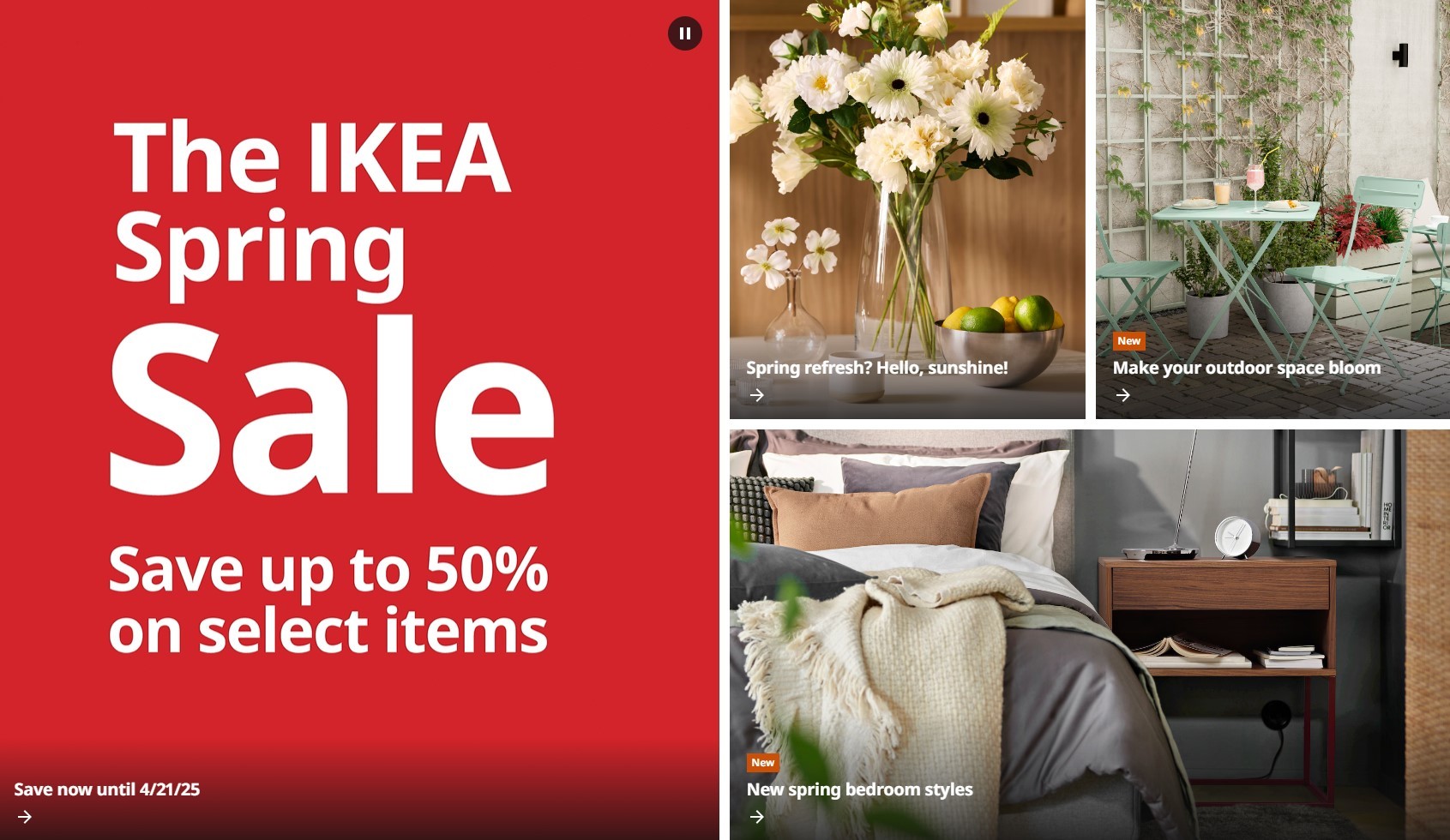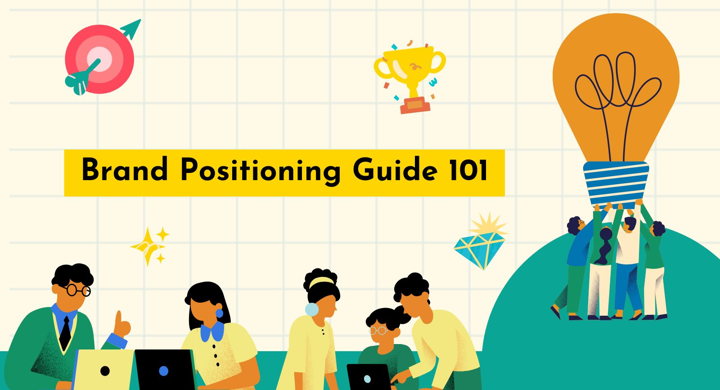What makes a successful brand? Quality service, open communication with customers, strong brand messaging, recognizability across multiple channels, and of course, a well-built brand positioning strategy.
When brand positioning is done right, your brand stands out among competitors, and your company’s value is clear and needs no explanation. In the most successful cases, your brand can even become a household name.
Like with anything else, the secret of successful brand positioning is consistent hard work, but it can be done—and we’ll explain how in this article. Here’s what we’ll cover:
⭐What is brand positioning?
⭐What is a brand strategy?
⭐Types of brand positioning
⭐How to build a brand positioning strategy
⭐Brand positioning examples to inspire you
What Is Brand Positioning?
Basically, brand positioning is the process of establishing your brand firmly in the minds of your target audience. This includes various aspects of how your audience perceives your brand:
- seeing the value of your product or service,
- recognizing your brand’s visual identity and voice,
- differentiating you among competitors,
- connecting with you on an emotional level.
To achieve all that, you need to have a deep understanding of who your target audience is, what their needs are, and how you can help them. You also have to develop a strong brand strategy—your long-term plan for reaching your business goals, building customer loyalty, and staying competitive on the market. Brand positioning is a vital part of your overall brand communication strategy; it shapes customer perception of your company.
A great brand positioning example would be the way we perceive Apple—it’s a famous brand many people associate with mobile phones in general. The product’s value is clear to Apple users, so very few would switch to Android (only 11%, according to recent data). Apple can also brag about customer loyalty and its audience’s emotional connection to the brand. This allows the company to expand the product line regularly, always keeping its visual identity intact with a recognizable logo and sleek design. All things considered, Apple is high on the list of successful product positioning examples out there.
5 Most Common Types of Brand Positioning
Brand positioning can come in different forms, depending on the type of product or service you provide, what your audience expects to see in your niche, and how you want to differentiate your brand on the market. You can combine multiple types of brand positioning or stick to one that best reflects your goals. Either way can work, as long as you communicate your positioning well to your target audience.
#1 Value-based brand positioning💎
This type of positioning suggests offering the best product value for the money a customer pays. In this case, brand messaging often focuses on the highest value of the company’s product on the market, emphasizing how the offered quality justifies the cost and what benefits people get from the product or brand.
#2 Quality-based brand positioning🏆
Many well-established brands turn to quality-based positioning because their product or service has stood the test of time over the years on the market. The proof is in superior quality, unique craftsmanship, and durability—all of which often come with high customer loyalty and brand recognition. Watch manufacturers like Jaeger-LeCoultre or Patek Philippe come to mind here as brands known for their outstanding quality and value.
Of course, younger brands can focus on quality-based positioning as well, highlighting the materials or technologies they use to deliver their high quality product and stand out in their niche. Take Gavinho Architecture & Interiors, for example. Their messaging always focuses on the sustainable, durable materials they turn to when creating their designs.
#3 Innovation-based brand positioning🚀
Obviously, this might not work for every industry, but when you can boast about the cutting-edge technology or inventions that go into your product or service, why now do just that? Brands that go for this type of positioning tend to disclose just enough about their innovations to the general public to impress people and want them to get the taste of the unique value offered.
#4 Price-based brand positioning💰
You can present your brand as the most affordable option on the market or, on the contrary, as the most luxurious. Either way, price-based brand positioning combines well with quality-based positioning. A brand can easily be cost-effective but still offer good quality, thus staying competitive. And if we talk about premium brands, their high quality often goes without saying, so their brand strategy naturally includes both types of positioning.
#5 Customer service-based positioning🤝
Often highly valued in the B2B segment, this type of positioning is common among SaaS products, martech solutions, and software developers. In an industry where fast response times and efficient product assistance can be a deal-breaker, customer service-based positioning is a must-have for a successful brand strategy.
Brands like FlippingBook, a SaaS platform for creating digital documents, pride themselves on impeccable customer service provided across a variety of channels, like chat, email, phone, and live product demos. And customer reviews on G2 or Trustpilot can serve as proof of this type of brand positioning.

How to Build a Brand Positioning Strategy
Understanding what brand positioning is and what types of brand positioning you can use is important, but in the end it all comes down to strategy. How to build a brand strategy that will help your business thrive, be recognizable and competitive? You can follow the steps below:
#1 Define your target audience
This is step one for any marketing strategy, including your brand strategy. Who is your customer and how can you help them? A company’s brand positioning might depend on the age group and the gender of their target audience, or other factors. Understanding the pain points of your customer and how you can address them, as well as their purchasing motivations and what they value in a brand will help you build a powerful brand positioning strategy.
#2 Conduct market and competitor research
One can’t really go without the other. You can start with the overview of the market and your particular niche, identifying the main selling points and any gaps in the market that your brand can fill. Make sure to look into how your competitors position their brands and what you can offer to stand out. Is there something they’re doing wrong? Can you outrival them? The value proposition you bring to the game can become the basis of your brand positioning.
#3 Outline your value proposition
This is where you decide what exactly sets you apart on the market. Your previous research will come in handy because you’ll know what your niche lacks—and what key benefit your target audience should get from you. This benefit will become your competitive advantage.
At this point, you might also want to prepare your brand positioning statement. It’s basically internal guidelines for your team, articulating the value you bring to your target audience. The statement keeps everyone on the same page and helps your team understand your brand positioning better.
#4 Select the type of brand positioning
Depending on what the market needs and how your product fits in, you can settle on one specific type of brand positioning or a combination of several. Of course, your choice will rely on your value proposition and the needs within your industry.
#5 Align your brand voice and visual identity
Any good brand strategy examples include companies that are recognizable, seemingly without effort. How to build a brand strategy like that? Make sure that your brand voice and messaging match your visual identity. This means that the tone of voice used across your content and your brand messaging should always be consistent, and your visuals should reflect and support your brand positioning.
Coca-Cola’s Open Happiness campaign is a perfect brand positioning example, when the messaging and the visual identity are a clear match. The company’s signature red branding and dynamic designs coordinated with the optimistic messaging, creating an emotional connection with their consumers.
#6 Stay consistent across every channel
Your brand communication strategy should be the same across the channels you use: your website, social media, emails, digital flipbooks, and anywhere else. If different teams work on those types of content, you need to ensure they communicate your brand positioning consistently.
Again, this is where they can use your well-crafted brand positioning statement we mentioned in step 3. It can be a separate piece of content or come as part of your brand book—a handy document on its own when you want to achieve consistency in your branding. Brand books come in different formats, but our favorite is the flipbook format, like this one by Ben and Jerry’s:
#6 Reevaluate your brand strategy regularly
Times change, and so do brands. It’s good practice to look at how your brand positioning is working and whether it needs fine-tuning every now and then. Has the market shifted? Does your target audience face the same problems as when you first established your brand positioning? Monitor the market and your competitors, and don’t be afraid to adjust your value proposition and your brand strategy accordingly.
If you’re looking for successful brand strategy examples where a company transformed with time, think of Netflix. They started as a DVD rental company and evolved into a global streaming service to fit the needs of their customers. Meanwhile, their brand positioning remains unchanged—bringing entertainment to all, anywhere.
Brand Positioning Examples to Inspire You
Now that you understand the ins and outs of how to build a brand strategy and the types of brand positioning you can use, let’s take a look at some brand positioning examples from real brands.
IKEA: Affordable, practical, & stylish

Everyone loves IKEA, and for a good reason. The company tops the list of incredible product positioning examples: the furniture is well-known and valued, easily recognizable, and desirable due to its good price/quality ratio. IKEA’s products are affordable, suitable for smaller homes thanks to their smart use of space, and are easy to assemble without hiring an expert.
Besides, the shopping experience is fun and immersive both online and in-store. On the website, you can design your own piece of furniture based on your specific needs. And when you’re shopping at one of IKEA’s shops in person, it’s easy to envision your dream home with rooms displaying the furniture you can choose.
Types of brand positioning used:
✅Price-based brand positioning
✅Quality-based positioning
Slack: Workspace tool for everyone
When you think of team communication tools, Slack is one of the first ones that comes to mind. That’s great brand positioning in action: Slack’s value is evident to the target audience. The tool stands out in the market as a central hub for collaboration, team connection, and workflow automation. Slack also has clear benefits as opposed to competitors: for instance, it’s less corporate than Microsoft Teams and much more efficient than simple email agents.
Additionally, it’s not just brand positioning that Slack does well. The company’s brand messaging and visual identity are consistent across every communication channel, from their website, blog, and release notes to videos on YouTube and social posts.
Types of brand positioning used:
✅Value-based brand positioning
Amazon: Flexible purchasing online

The company combines several types of brand positioning in their strategy. Taking pride in the platform’s ease-of-use, wide product selection, and fast delivery, Amazon can safely position itself as a customer-centric brand. With personalized recommendations, regular discounts and promos, and flexible return policies, it’s what any consumer expects from an eCommerce platform. Plus, Amazon Prime ensures fast shipping and exclusive perks, providing added value to its subscribers.
Types of brand positioning used:
✅Customer-service based brand positioning
✅Value-based brand positioning
✅Price-based brand positioning
Blue Origin: Innovation in travel
We’re in an age when innovation in travel actually means space travel. Blue Origin is an American aerospace manufacturer and spaceflight company that focuses on reusable rocket technology. And yes, they actually offer space tourism. While it’s definitely not something simply anyone can afford, it’s pure innovation, and that’s what attracts people to the service and the brand. Plus, with the reusable engines in Blue Origin’s rockets, space travel may become more affordable in the future.
Types of brand positioning used:
✅Innovation-based brand positioning
Shopify: eCommerce for businesses of any size
With its focus on helping entrepreneurs sell online, no matter the size of their business, Shopify’s strategy claims a spot among customer-centric brand positioning examples. The platform is scalable, so it really does fit any business model. Numerous success stories on Shopify’s website prove how well it works in any industry and support its brand messaging centered around the entrepreneurial spirit.
Types of brand positioning used:
✅Customer-service based brand positioning
✅Value-based brand positioning
The information above is pretty much all you need to build a successful brand positioning strategy. Hopefully our guidelines and examples will inspire you to develop a strong value proposition that can make you stand out in your niche.





